Behind the scenes at Toyota's R&D center – Click above for high-res image gallery
The last 18 months have been a particularly painful period for Toyota Motor Company. Starting in early 2009, with the automotive industry facing a global economic recession, Toyota went from one of the world's most profitable automakers to grappling with its first full-year loss in more than seven decades.
As Toyota operations around the world began to slash spending in an effort to return to black ink, quality issues bubbling below the surface for several years suddenly burst open like a ruptured oil well. And while most automakers have faced issues with product quality at various times in their histories, the past year has been especially gut-wrenching for Toyota. The company's ascension to sales dominance was fueled in large part by its reputation for solidly engineered, reliable products with consistently excellent fit and finish. That reputation has now been brought into question.
As 2009 wound to a close, reports began surfacing that Toyota and Lexus vehicles were accelerating out of control, and the syndrome has been blamed for a number of fatalities. A string of related and unrelated recalls began and continue to this day, with the most recent coming just a week ago for a Lexus valve spring engine defect.
In an effort to show transparency and a concerted effort to improve its quality and safety, for the first time in its history, Toyota has invited a small group of journalists and analysts into its research and safety facilities in Toyota City, Japan. As part of that select group of media, in the coming days, we'll have a chance to peek behind the curtain, look at how its products are developed and tested and talk to Toyota executives, including CEO Akio Toyoda as we try to fully understand not only how things went so horribly wrong, but how the automaker plans to get back on track.
Make the jump for Part One of our series
Day 1 - Research and Development Organization
We began our tour at Toyota headquarters' R&D facility where, we learned about the automaker's development and testing processes and what changes have been implemented as a result of the recent problems. For the most part, Toyota will continue creating cars and technology in the same manner it has in the past. However, the two major areas that will change include an expansion of the testing use cases beyond current methodologies and improvements in the training and development of its staff.
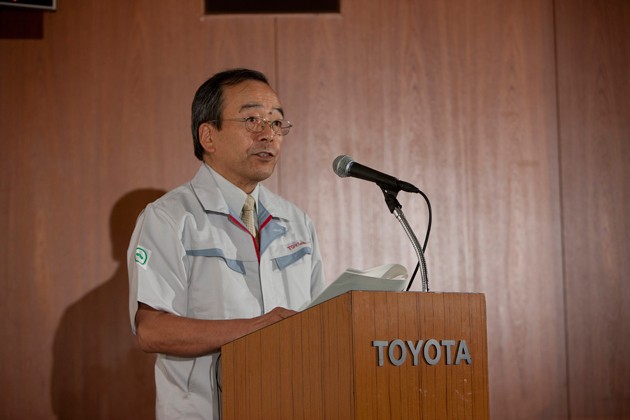
Takeshi Uchiyamada, Toyota's executive vice-president for research and development, acknowledged during a group interview that overly aggressive growth over the past decade had contributed to the current problems. Branching into too many new market segments too quickly stretched Toyota's resources, making it difficult to develop young engineers and technicians. Uchiyamada says that Toyota will be doing "more teaching of younger staff" in ways to examine issues and find innovative solutions.
To a large degree, much of Toyota's product development process isn't really any different from what we have seen at other automakers. At its most basic level, it consists of three central phases, starting with requirements analysis. At the beginning of a project, whether it's a new car or a just a new technology, the engineers determine what the product ultimately needs to do and how it should perform. Based on those requirements, a set of detailed specifications are produced.
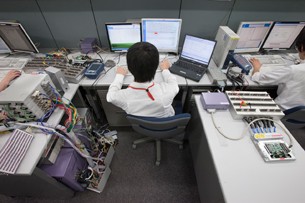
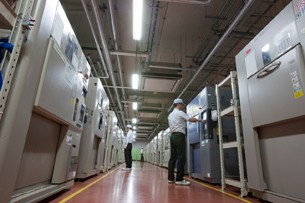
The engineers and designers then set about developing the hardware, software and assorted systems that will meet those requirements. This could consist of either all-new parts or, more often, evolutions of existing designs. Throughout that design process, the hardware and software are checked against the requirements to make sure everything is on track.
The testing process includes simulations at multiple levels, ranging from software-in-the-loop, hardware-in-the-loop and vehicle-in-the-loop. All this happens before vehicle integration and final verification and validation testing. Finally, once the designs are validated and locked in, the process of calibration brings things up to snuff for product applications.
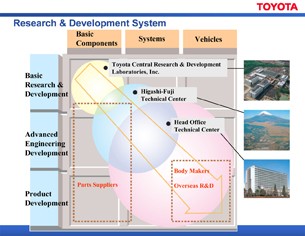
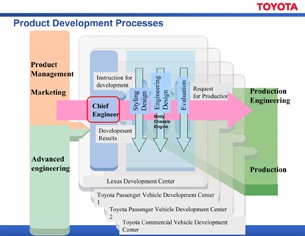
All of this is overseen by a chief engineer for every project or vehicle. The job of the chief engineer is to oversee everything related to a project, taking inputs from product management, marketing and advanced engineering, then sending it on to the functional groups in their organization. Every automaker has their own version of this chief engineer, with a variety of titles. At General Motors, this would be the vehicle line executive, at Ford, it's the chief nameplate engineer and the title at Honda is large project leader. Whatever the title, the end result is that this individual has ultimate responsibility for the end product.
Toyota now believes that its product development organization has become too flat over the years, with group managers having too many team members reporting to them. While many organizations have been trying to take out layers of management in recent years to improve organizational efficiency and lower costs, this strategy can be taken too far. One of the things that managers need to do is educate and develop the staff reporting to them.
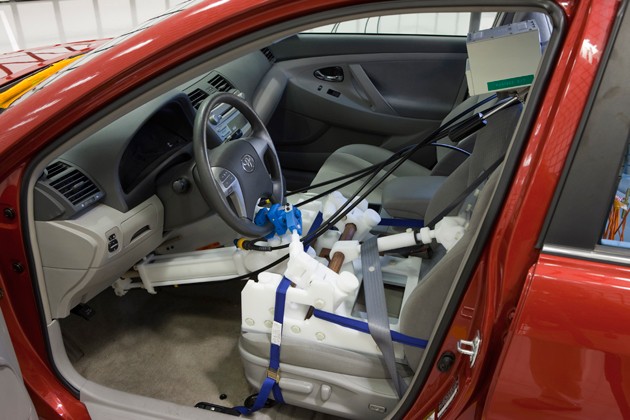
The excessively lean organization at Toyota has led to younger staff not getting the necessary oversight to help them learn the nuances in engineering. Engineering is about much more than hard numbers and quantitative analysis – good engineers learn to think outside the box, examining ways their products could be used or misused in unexpected ways. In Toyota's case, a prime example was the use of all-weather floor-mats. When the mats were developed, they were not intended to be used in conjunction with standard carpet floor-mats – and yet, that's exactly what happened, leading to a spate of issues with mats being jammed under accelerator and brake pedals.
It is hoped that increased on-the-job training will lead to engineers being able to better anticipate problems early in the development process and test for those conditions.
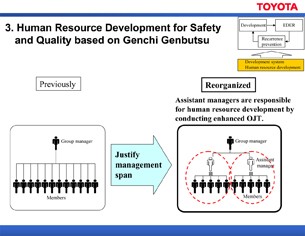
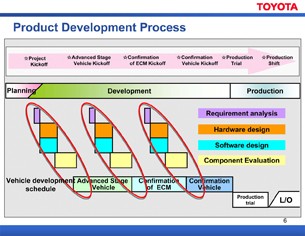
This leads into the other major change the automaker is making, what Katsutoshi Sakata refers to as "neutral stance" analysis. Toyota officials acknowledge that the rapid growth of the company has led to some degree of complacency. The expectation that Toyota "can do no wrong" was born out of the company's previous strong reputation for quality and reliability. To rectify this situation, Sakata was named general manager of the design quality innovation division that was formed in May of this year.
The intent of forming a more neutral stance is to take greater account of outside information on how products are used and how they perform. Another prime example was the case of the 2010 Lexus GX460's handling. During testing earlier this spring, Consumer Reports found that lifting off the throttle in the middle of a turn could induce severe oversteer and instability. CR found this during a test that its engineers normally run on every vehicle they run at their track.
The video meant to be presented here is no longer available. Sorry for the inconvenience.
It's important to note that this maneuver is not part of any regulatory requirements and was not part of Toyota's testing regimen. However, it is also not an unrealistic maneuver, and when Toyota engineers tried it themselves, they replicated the magazine's results, and their findings matched those of the publication. Henceforth, CR's handling test has now been incorporated into Toyota's standard battery of evaluations.
Over the past two decades, automakers have increasingly involved suppliers earlier in the product development process and given them more responsibility for producing subsystems. As part of the more thorough testing process, Uchiyamada informed us that "we need to evaluate supplier's design and manufacturing closer than before" and "go beyond making sure they just meet the specification." In other words, the same out-of-the-box evaluation will be applied at the supplier level.
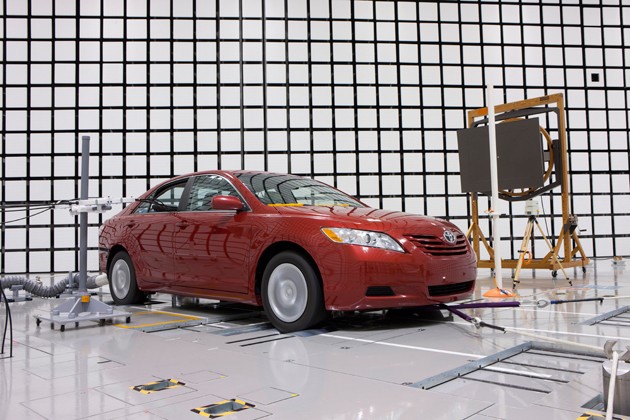
According to Uchiyamada, Toyota engineers are "now assuming very severe usage conditions" and "items beyond the standard test procedures." The additional testing is expected to add about four weeks to the product development schedule, a process that currently runs about 24-30 months from design freeze to production. Uchiyamada acknowledges that there may be some temporary cost increase as this heightened scrutiny is applied, "but more stable quality will reduce costs in the long-term."
In our next installment, we'll take a look at how Toyota's engineers actually go about testing, with a specific focus on the electronic throttle control systems that have been at the core of Toyota's largest recall.
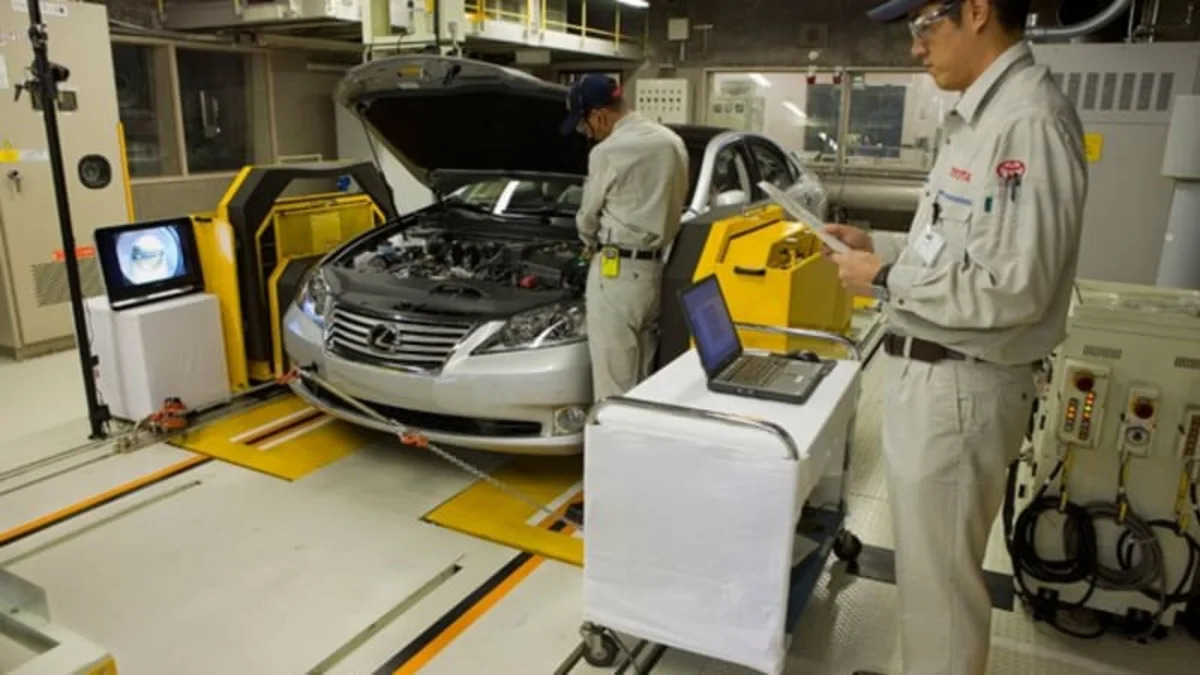


Sign in to post
Please sign in to leave a comment.
Continue